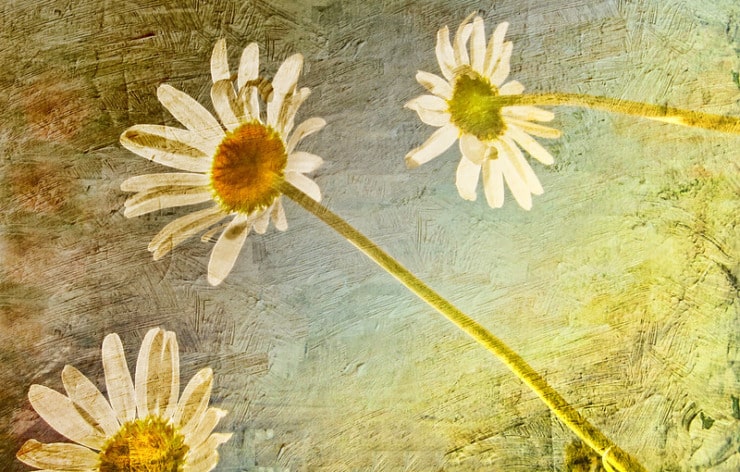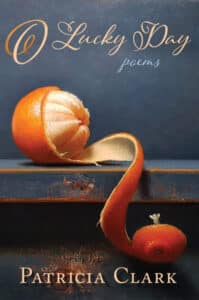
Patricia Clark writes meditative poems, or poetic meditations
I’m still trying to make my mind up about whether Patricia Clark writes meditative poems or poetic meditations in her new collection, O Lucky Day. I could call it in either direction, and I suspect it wouldn’t make much difference. Let’s say Clark’s poems contain more than a small element of meditation and let it go at that.
She writes an open letter to her husband after a quarrel, calling it “Oxygen.” She describes bathing in the forest, and it becomes almost a uniting of skins, plants, and trees. She considers juneberry leaves as gold coins, dives into the wrecked landscape of Fukushima, and notes how common, everyday objects (a hat, a cigar box) evoke her grandfather. And she asks for a new face to cover her face, because “I’ve looked at myself too long.”
Reading her poems is like peeling back an onion (without the tears). Remove one layer, and a new layer emerges as she successively reveals her thoughts and ideas. Even when she describes taking a nap instead of pruning the magnolia tree, the poem moves from cleaning the shears to the Greek philosopher Pythagoras to bird migration. And it works well, as you enter a world of words and sentences always meaning more than their literal meaning.
Here’s how Clark describes seeing a Facebook notice about a former husband.
Elegy Not to Be Written

It might have been April. Two years ago?
I saw on Facebook he was in a coma.
I read that they might amputate his feet.
It was too much and I turned away.
Who wants all that displayed to the world?
Was it indecent of me to go walk along the river?
How I had loved him once!
Thrilled to be a bride. Some chapters
are shorter than others. I said
a prayer for his health.
At the Grand River where I walk, a place
where a black willow leans over water,
there’s a patch of milkweed, stalks
and pods knocked down by deer
or random dogs, plus weather,
pods split open, soft gray,
all the fluff inside drifted off,
only a few seeds reaching the chance
of arable ground.
Throughout the 42 poems of the collection, you’ll find yourself being guided to a place you didn’t expect to go. This is contemporary poetry at its best (“writing it slant”), and Clark is a master at it.

Patricia Clark
Clark has published six collections of poetry, and her poems have been published in numerous literary journals and magazines, including The Atlantic, Gettysburg Review, Poetry, and Slate. Her work has also been recognized with several honors and awards, including the Geraldine Brooks Prize and 2018 Book of the Year Award from the Poetry Society of Virginia. She was a professor in the Department of Writing at Grand Valley State University in Allendale, Michigan, and from 2005 to 2007, she served as the poet laureate for the city of Grand Rapids. Her poem “Astronomy in Perfect Silence” was chosen to go to the moon on the NASA / Space X Launch in 2024 as part of the Lunar Codex.
Poetic meditation or meditative poetry? In the end, it doesn’t matter. O Lucky Day is the kind of collection you feel grateful for having read.
Photo by Neil Kenrick, Creative Commons, via Flickr. Post by Glynn Young.
How to Read a Poem uses images like the mouse, the hive, the switch (from the Billy Collins poem)—to guide readers into new ways of understanding poems. Anthology included.
“I require all our incoming poetry students—in the MFA I direct—to buy and read this book.”
—Jeanetta Calhoun Mish
- Poets and Poems: Donna Vorreyer and “Unrivered” - October 7, 2025
- Poet Sidney Lanier and the Lost Cause - October 2, 2025
- Poets and Poems: A.J. Thibault and “We Lack a Word” - September 30, 2025

Patricia Clark says
Thank you for your insights on my book!
Could the post be shareable?
Glynn says
Patricia – the post is shareable — see the row of icons right after “Latest posts by Glynn Young.” The options are the major social media, copy link, and the green one on the right offers even more options.